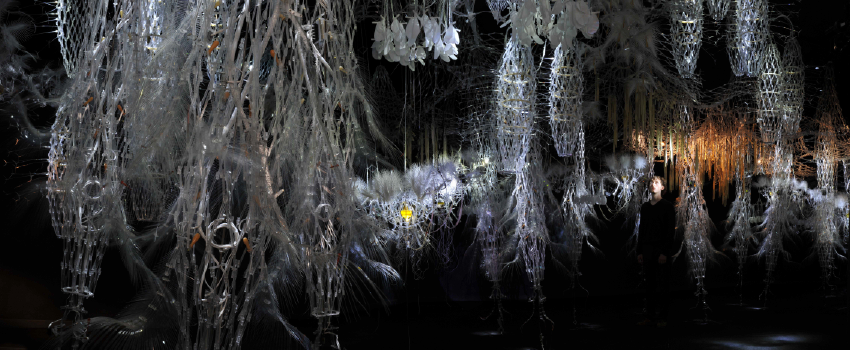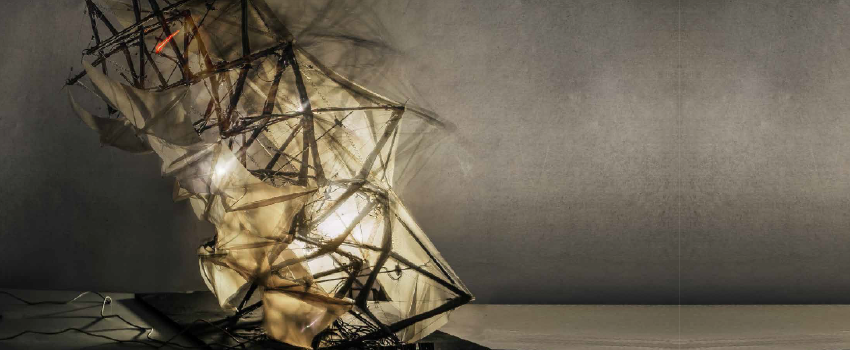Lectures
MSc1&3:Lectures
RAM | Real Additive Manufacturing | Conference 2015 |FRIDAY 23rd OCTOBER | 09:00 HRS
On Friday October 23 the first Real Additive Manufacturing conference will be hosted at TU Delft - Architecture. During this event insight will be generated on real potential of additive manufacturing for the built environment industry.
OUTLINE | Additive Manufacturing (AM) is referred to as a very promissing technique, but what are the important functions and characteristics of produced building components. Can additive manufactured elements already be implemented widely in the building industry, or should the performance be improved first?
This Think Tank will focus on the implementation of AM in the building industry, trying to answer questions regarding durability, (anisotropic) material behaviour and what kind of materials can be used. Can different materials be combined in an AM production process, or are ‘new’ materials with matching production techniques desired is a question that will arise, but there are more challanges. During the discussion we want to invite you to be creative and think about the application of AM, but regulation is also a topic. How does AM fit in the building industry’s standards and legislation?
Let’s give the building industry a boost with Real Additive Manufacturing!
Date: Friday October 23, 09.00 - 18.00
Location: Delft University of Technology Faculty of Architecture, Berlage Rooms (ground floor) Julianalaan 134 Delft
LECTURE 1.0 | INTERACTIVE ARCHITECTURE | MONDAY 9th NOVEMBER | 14:00 HRS | PROTOSPACE
Performing vs Forming Programming Matter for Adaptive Buildings | Areti Markopoulou
The novel aspect of the Digital Matter research agenda presented is the process of implementation of smart materials in architectural systems and the exploration of how digital design- fabrication and physical computing can contribute on the implementation of dynamic systems in the architectural scale.
The new challenges in architecture, the impacts of the Information Era Technologies and the advances on digital manufacturing techniques bring new or adapted concepts, where physical space seamlessly intertwines with digital content. Our buildings and cities will need new interfaces to communicate with the environment and embedded systems of performance that do not rely on existing urban infrastructures.
Material Intelligence in combination with Artificial and Computational Intelligence, sensors, actuators, as well as bio-mimetic and digital manufacturing innovations will play a critical role in this development providing revolutionary ideas on growth, adaptability, repair and energy savings in architecture.
Should we continue constructing rigid and fixed structures?
Or can buildings and cities begin to think?
Designing Engaging Interactions through Movement Experiments with Near Living Architecture | Dana Kufic
Can architectural environments provide an engaging and emphathetic interaction with occupants? In this talk, we describe our work designing movement based interaction strategies for the Hylozoic Series architectural environments. In the first part of the talk, we will describe affective movement based interaction. Human body movements are a significant source of non-verbal communication that are used to convey affective state. The ability to recognize affective expressions and generate appropriate responses with recognizable affective content is a key component for creating an engaging, entertaining, and empathic human-machine interaction. This talk will present our recent work on developing approaches to systematically identify movement features most salient to affective expressions and to exploit these features to design computational models for the automatic recognition and generation of affective movements. We describe a comprehensive framework to for understanding which features of movement convey affective expressions, the automatic recognition of affective expressions encoded in movements, and adapting pre-defined motion paths to overlay affective content.
In the second part of the talk, we will describe an approach for adapting the Intelligent Adaptive Curiosity learning algorithm previously introduced in the developmental robotic literature to distributed interactive sculptural systems. This Curiosity-Based Learning Algorithm (CBLA) allows the system to learn about its own mechanisms and its surrounding environment s through self-experimentation and interaction. A novel formulation using multiple agents as learning subsets of the system that communicate through shared input variables enables us to scale the learning algorithm to a much larger system with diverse types of sensors and actuators. Experiments on a prototype interactive sculpture installation demonstrate the exploratory patterns of CBLA and the collective learning behaviours through the integration of multiple learning agents.
Schedule:
Friday 23rd of October: Real Additive Manufacturing 2015 Conference
Reference links: TEDx talk – http://tedxtalks.ted.com/video/Robotic-Building-Henriette-Bier
Open access papers from the Research Gate - http://www.researchgate.net/profile/Henriette_Bier/publications
Monday 9th of November: Interactive Architecture
Monday 23rd or Tuesday 24th of November: Theory and Practice
Monday 30th of November: Theory and Practice 2
Monday 7th of December: Built Environment
Monday 14th and Wednesday 16th: Final Presentation and Report



